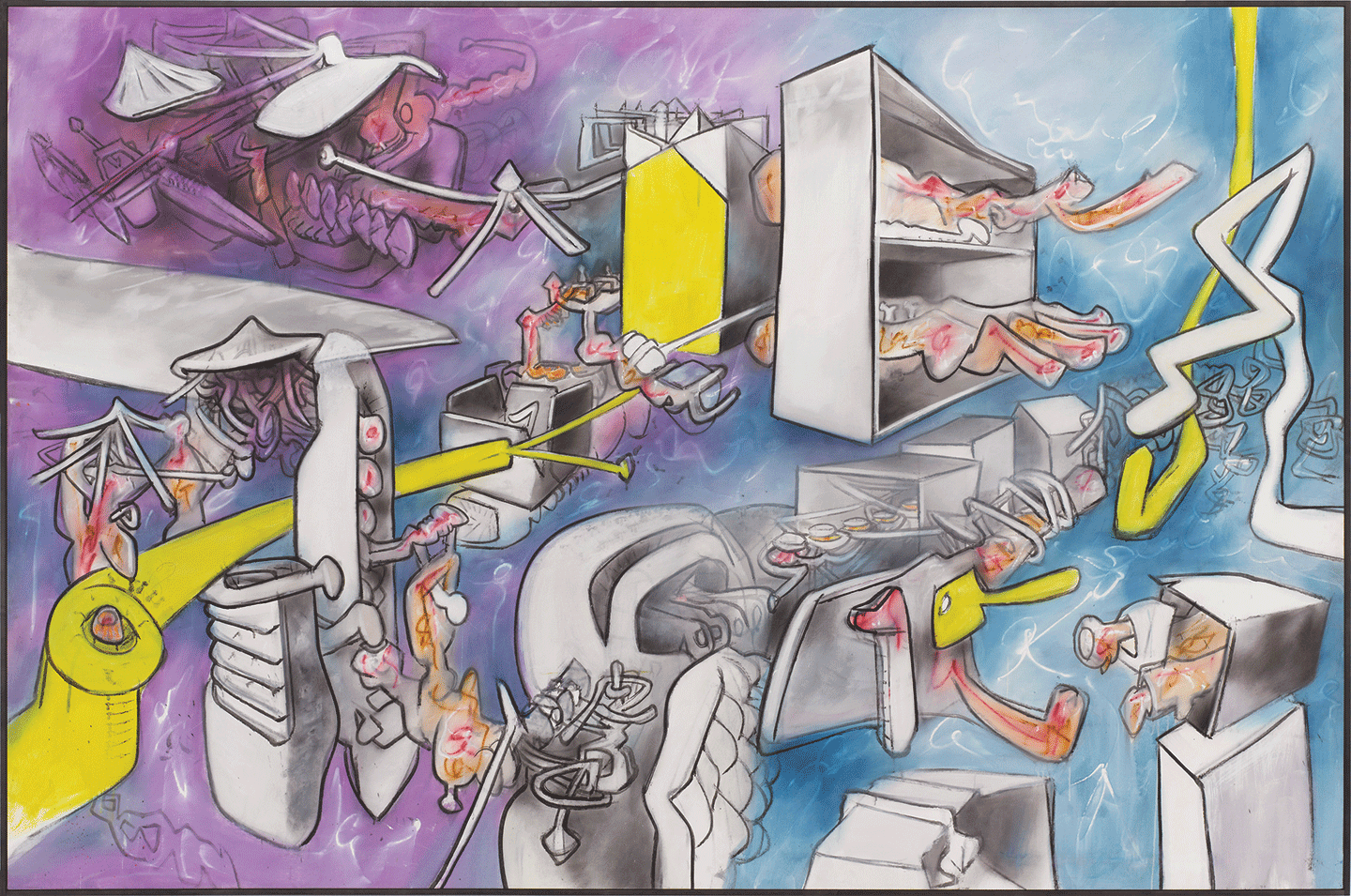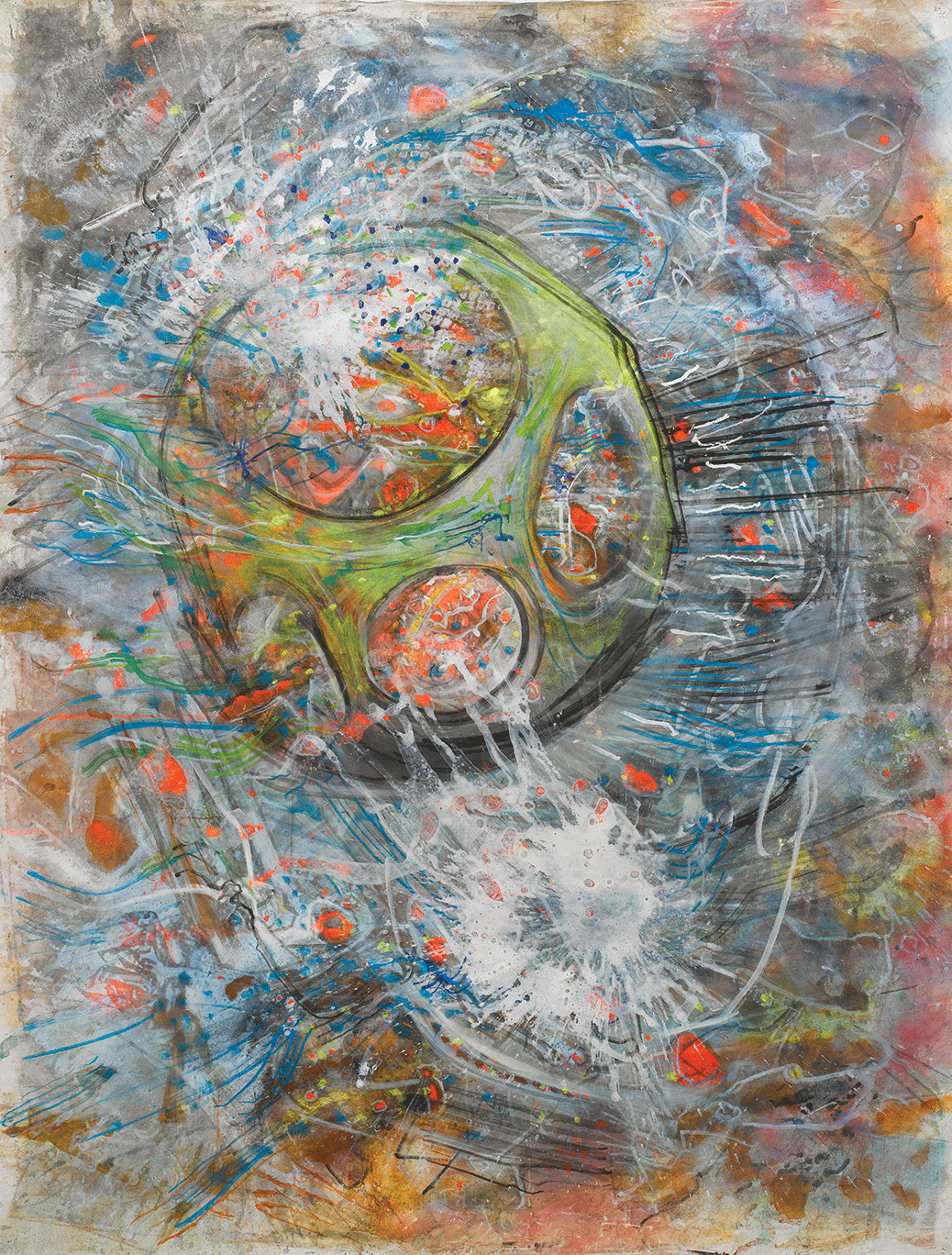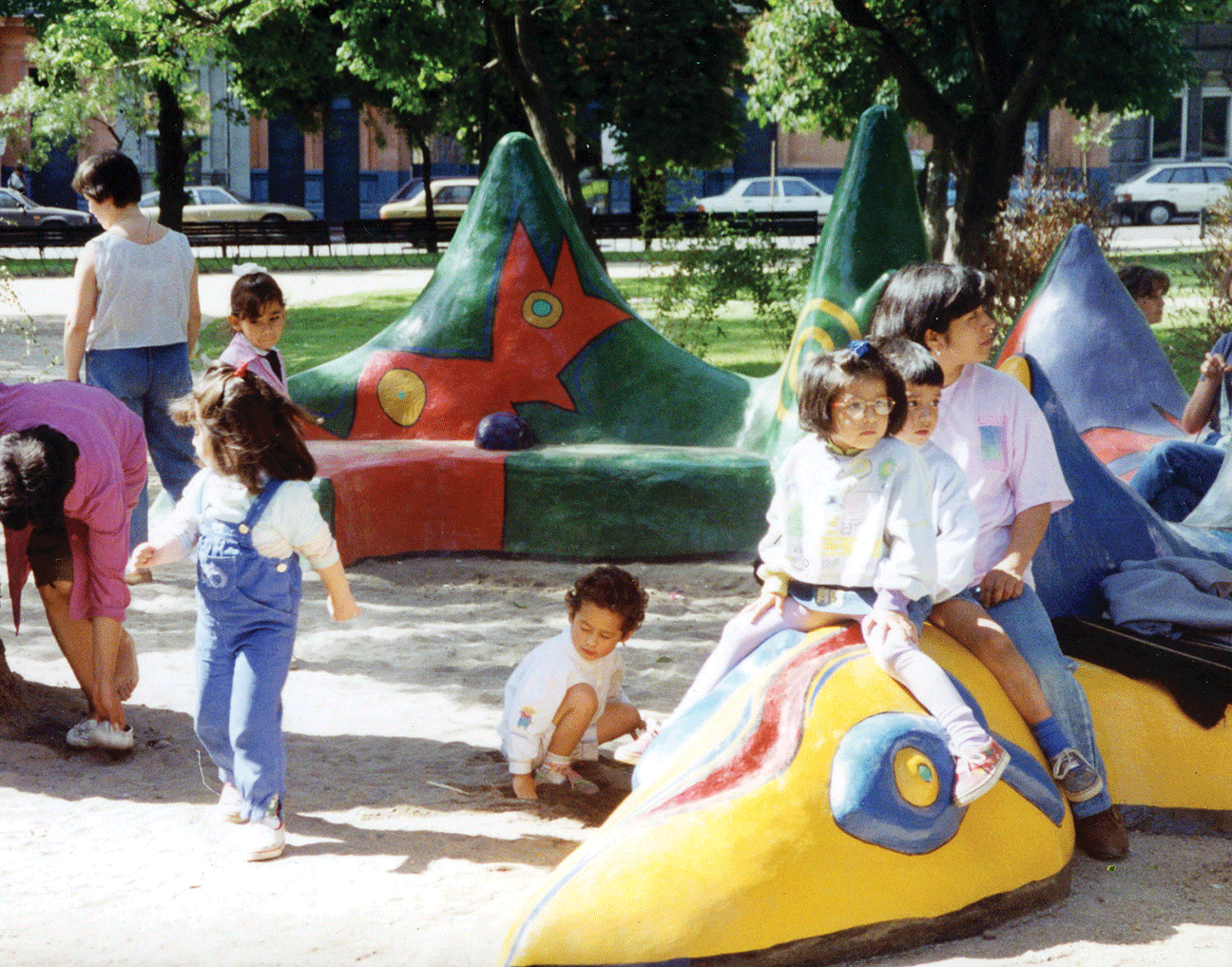« Reviews
Two Generations: Roberto Matta and Federica Matta
Rosenbaum Contemporary - Boca Raton
By Raisa Clavijo
A major exhibition of the works of the master Roberto Matta opened at the Rosenbaum Contemporary in Boca Raton at the end of March. The show, “Two Generations,” assembled the work of this artist and that of his daughter Federica, an author, painter and sculptor. The show structured a curatorial discourse that encouraged a visual and conceptual exchange between the works of the master and his disciple, while at the same time highlighting the close intellectual, spiritual and emotional ties between the two.
Architect, painter and poet, Matta is one of the most important artists of the 20th century. In his youth, upon completing his degree in architecture, he abandoned his native Chile to travel throughout Europe and expose himself to new experiences. At first, he worked as a draftsman at Le Corbusier’s studio in Paris. While there, he gradually became interested in painting. He then met Federico García Lorca, Salvador Dalí and Rafael Alberti, the geniuses of modernism, who introduced him to André Breton. Upon seeing his work, Breton endorsed his incorporation into the surrealist group. There followed fruitful years of apprenticeships and exchanges, during which he would establish friendships with Yves Tanguy, Gordon Onslow-Ford and Marcel Duchamp, among other noteworthy artists.

Roberto Matta, Flux de psycho-espace, 1973, oil on canvas, 78 ¾” x 118 ¼.” © Artists Rights Society. Photo: Mark Waldhauser. Courtesy Pace Gallery. Image courtesy of Rosenbaum Contemporary.
It was during this period that ‘psychic automatism’ became part of his creative process and the hidden aspects of the human mind became the focus of his research. In his paintings and drawings, there began appearing zoomorphic and anthropomorphic references, machines, fantastic beings, swirls, transparencies and opacities, a kind of voyage to a galactic dimension that he called “psychological morphologies.”
Thus, his creations experienced a profound formal and conceptual transmutation based on a Freudian interpretation of the human and cosmic nature of the universe. His “innerscapes” followed the dictate of his impulses and of a dynamism that explored the subconscious and the surface of the painting. When he moved to New York in 1939, his work anticipated many of the innovations of Abstract Expressionism and, during the 1940s, decisively influenced artists of that movement, including Arshile Gorky, Robert Motherwell, Jackson Pollock and Mark Rothko.
Throughout his life, Matta traveled extensively throughout Europe, North America and South America, splitting the last few decades of his life between France and Italy. The master rejected the formal limits imposed by styles and never aligned himself in a definitive way with any pictorial tendency. “Two Generations” included works created at different times throughout his career, highlighting his contribution to the visual exploration of inner psychology and the important role his “innerscapes” play as metaphors for the hidden aspects of the human mind.

Roberto Matta, La terre et ses oignons, 1994, oil on canvas, 108” x 82 1/8.” Courtesy of Rosenbaum Contemporary. Image Artists Rights Society. Photo by GR Christmas. Courtesy Pace Gallery.
The exhibition also highlights his skill in addressing space. Matta sought to give form to the structures erected in his mind to create a domain beyond the visible and conventional perspective. His genius was in capturing the sensation of space, movement and time, giving birth to compositions in which he attempted to represent the invisible frontiers between the conscious universe and the subconscious.
Along with a display of his notable works, there is a selection of sculptures, paintings on canvas and works on paper by Federica Matta. Author of numerous books, many of them for children, her artistic work bears a close relationship to her literary work. She has illustrated her own books with scenes that, as with her art, structure a narrative with biographical parallels. Federica presents a world rich in mythological creatures and fantastic characters that, as in her father’s case, explore the interstices of the human soul with a particular keenness and sense of humor while employing the simplicity and innocence characteristic of children. Through her work, Federica demonstrates an audacious temperament and insatiable desire for experimentation, transcending her father’s legacy and thereby constructing its own authentic discourse.
Throughout her career, Federica Matta has created paintings, sculptures, prints, objects, textiles and toys, much of which has been exhibited across Europe, Asia and the Americas. She has also developed important public arts projects in plazas in several cities in France, as well as Chile, Japan and Portugal. Because her work always seeks close interaction with the public, many of her projects are accompanied by workshops that allow viewers to participate in the creative act.
“They may be masculine and feminine points of view, but in the end, confluent points of view, two interpretations of the same inner space…two maps of the same imaginary place that we call ‘reality,’ ” she said at the opening. “Above all, I have been able to see how our spaces, although so different, are inhabited by the same ‘witnesses of the universe,’” a reference to one of Matta’s works from the 1990s.
“Two Generations” proposes a dialogue between two artists for whom the creative exercise is an act of surrender, experimentation and the never-ending quest for new means of expression.
(March 28 - June 1, 2019)
Raisa Clavijo is the editor-in-chief of ARTPULSE. She is an art historian, critic and curator based in Miami. Clavijo has a B.A. in art history from the University of Havana and a master’s degree in museum studies from the Universidad Iberoamericana in Mexico City. Former chief curator at Museo Arocena in Mexico (2002-2006), she founded Wynwood: The Art Magazine, in Miami, where she worked as editor from 2007 to 2009. In 2009, she founded ARTPULSE and ARTDISTRICTS magazines.
Filed Under: Reviews




































Leave a Reply
You must be logged in to post a comment.